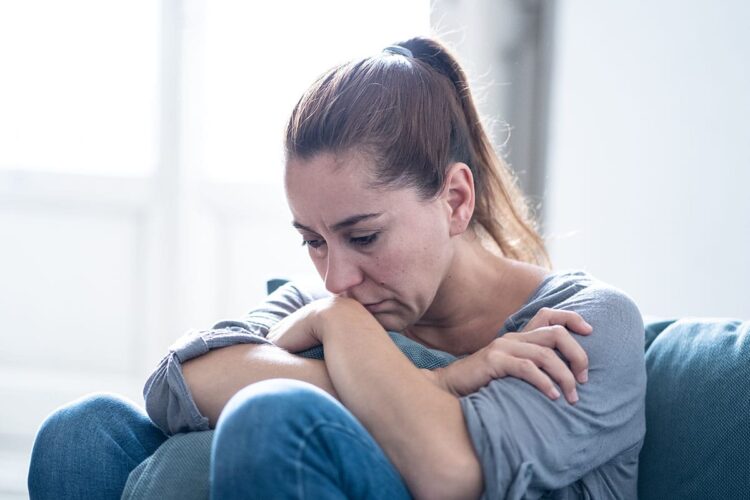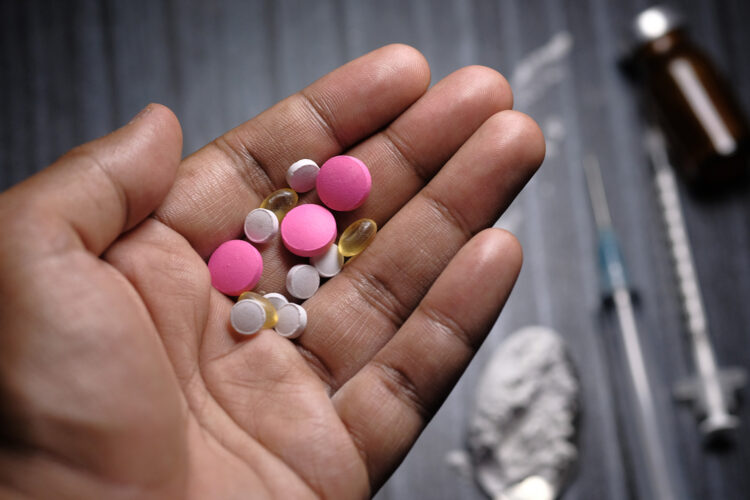Opioid addiction has become an epidemic in recent years, with overdose deaths from prescription and illicit opioids quadrupling since 1999. This public health crisis affects people from all walks of life, regardless of age, race, gender, or socioeconomic status.
Understanding the nature of opioid addiction and the most effective treatments is crucial to combatting this epidemic and helping those struggling with addiction build a life in recovery.
The Biology Of Opioid Addiction
Opioids act on the brain’s natural opioid receptors, located throughout the brain and central nervous system. They flood these receptors with dopamine, producing euphoric effects and pain relief. With repeated opioid use, the brain structure and chemistry change. Tolerance develops, requiring higher doses to achieve the same effect. Stopping opioid use after tolerance develops leads to withdrawal symptoms—such as muscle aches, nausea, diarrhea, and agitation—as the brain struggles to regain homeostasis.
This tolerance and dependence create disruptions in natural reward pathways. Eventually, people use opioids compulsively not to get high but to relieve the distress of withdrawal. This loss of control over drug use is the hallmark of addiction.
Even after detoxification and abstinence, the brain remains altered, which leads to high rates of relapse. Luckily, evidence-based treatment methods can counteract these brain disruptions and enable long-term recovery.
Jackson House Addiction Treatment & Recovery Centers offer a holistic approach to opioid addiction treatment, addressing the physical, psychological, and social aspects of addiction.
Overdose Risks

In addition to the risk of addiction itself, opioid misuse also carries serious risks of overdose and death due to respiratory depression. Higher doses slow and eventually stop breathing altogether. Combining opioids with other substances like alcohol or benzodiazepines increases respiratory depression and overdose risk significantly.
Most opioid overdose deaths involve multiple substances, highlighting the importance of polysubstance use education and addiction treatment.
Fentanyl and synthetics, like carfentanil, are also exacerbating overdoses across North America. These potent opioids are often added to street drugs or counterfeit pills without users’ knowledge, putting them at extreme risk of overdose. Harm-reduction strategies like naloxone access and fentanyl test strips seek to mitigate these risks, but tackling the root causes of addiction remains critical to preserving life.
A Multi-Faceted Approach To Recovery
Research increasingly shows that a combination of medication, counseling, support groups, and sober housing provides the most comprehensive treatment and better recovery outcomes. Because opioid addiction is a complex disease affecting brain pathways, environment, and health, no single treatment modality is universally effective on its own. An integrated, multi-faceted approach tailored to each person offers the best chance at sustainable recovery.
Medications like methadone, buprenorphine, and naltrexone are often crucial in relieving withdrawal symptoms, reducing cravings, and blocking the effects of opioids. This pharmacological assistance can aid significantly in stabilizing individuals in recovery. Counseling helps people understand their behaviors and triggers, build healthy coping mechanisms, and develop strategies to prevent relapse. Support groups provide community and peer accountability. Sober housing gives structure and removes individuals from environments where substance use might occur.
Combining these treatment components allows each modality to complement the others. Medication assists with the biological aspects of addiction, while counseling tackles the psychological. Groups like NA provide much-needed social support. Sober housing impacts environmental factors. This comprehensive approach addresses the medical, emotional, social, and ecological components that maintain addictive behaviors.
Of course, the specifics of treatment should be tailored to each individual. For some, specific modalities like medication may be more crucial than others. The appropriate treatment plan depends on the person, the severity of the addiction, and the resources available. But generally, research confirms that a broader-based approach combining multiple evidence-based treatments results in better outcomes in recovery. Recovery is a complex process; an integrative model delivers multidimensional therapy for the best chance of success.
Treatment Options For Opioid Addiction

Fortunately, several evidence-based treatment options exist, and recovery is possible for opioid addiction. Some of the most effective options are the following:
1. Detoxification And Medication-Assisted Treatment (MAT)
The journey to recovery often begins with detoxification, during which individuals undergo medical supervision to manage withdrawal symptoms safely. Medication-assisted treatment (MAT) may be utilized to alleviate cravings and stabilize brain chemistry. MAT combines medications with counseling and behavioral therapies to support recovery.
2. Counseling And Behavioral Therapies
Counseling and behavioral therapies play a crucial role in addiction recovery, helping individuals address underlying issues, develop coping skills, and modify destructive thought patterns and behaviors. Cognitive-behavioral therapy (CBT), motivational interviewing, and contingency management are evidence-based approaches to promote lasting recovery.
3. Peer Support And Group Therapy
Peer support and group therapy offer invaluable encouragement, empathy, and understanding throughout recovery. Connecting with others who have experienced similar challenges fosters a sense of belonging and reduces feelings of isolation. Programs like Narcotics Anonymous provide peer support, community, and shared experiences. For many, the 12-step involvement is an essential ongoing support in recovery. Other options like SMART Recovery also exist.
Group therapy sessions, led by trained therapists or counselors, provide a structured setting for exploring issues related to addiction, mental health, and interpersonal relationships. These sessions may focus on topics such as relapse prevention, communication skills, anger management, or trauma healing. Group therapy offers a supportive and collaborative environment where participants can learn from each other’s perspectives, receive feedback, and practice new skills.
4. Lifestyle Changes And Wellness Practices
Recovery from opioid addiction often involves making significant lifestyle changes and adopting wellness practices that promote physical, emotional, and spiritual well-being. Engaging in regular exercise, practicing mindfulness and meditation, maintaining a healthy diet, and prioritizing self-care activities can enhance overall health and resilience in recovery.
5. Sober Living Homes
Sober living homes, also known as halfway houses or transitional living residences, offer a supportive environment for individuals in early recovery from addiction. These structured living environments provide a safe and sober living space where residents can continue their journey of healing and rebuilding their lives after completing formal treatment programs.
These homes typically have established rules and guidelines aimed at promoting accountability, sobriety, and personal responsibility. Residents are expected to participate in house meetings, adhere to curfews, and contribute to household chores. Moreover, sober living homes often offer additional support services—such as peer counseling, life skills training, and employment assistance—to help residents successfully transition back into society while maintaining their sobriety.
By providing a supportive community and a structured environment conducive to recovery, sober living homes play a crucial role in helping individuals navigate the challenges of early sobriety and build a solid foundation for long-term recovery.
Recovery Is A Marathon, Not A Sprint

It’s important to understand recovery from opioid addiction as an ongoing process, not an instant fix. There is no set timeline—it may take months or even years to rebuild healthy routines, relationships, and reward pathways in the brain after addiction takes hold. Patience, persistence, and compassion are paramount.
Relapse is common and does not indicate failure. The benchmark of success is staying engaged in the recovery process rather than maintaining perfect abstinence. Support networks help prevent isolated setbacks from spiraling into a full-blown relapse. Above all, maintaining hope is key. Hope provides the motivation needed to keep moving forward.
Addressing Co-Occurring Disorders
Many individuals struggling with opioid addiction also grapple with co-occurring mental health disorders, such as depression, anxiety, or post-traumatic stress disorder (PTSD). Addressing these underlying issues is essential for sustained recovery. Integrated treatment approaches that simultaneously target addiction and mental health disorders offer the best chance for long-term success.
Rebuilding Relationships And Social Support Networks
Opioid addiction often strains relationships with family members, friends, and loved ones. Rebuilding trust, repairing damaged relationships, and fostering healthy social support networks are integral components of the recovery process. Family therapy, couples counseling, and communication skills training can facilitate healing and strengthen interpersonal connections.
Continuing Care And Relapse Prevention
Recovery from opioid addiction is a lifelong journey that requires ongoing commitment and support. After completing formal treatment programs, individuals benefit from continuing care services, including outpatient therapy, support group meetings, and alumni programs.
Relapse-prevention strategies—such as identifying triggers, developing coping strategies, and creating a relapse-prevention plan—help individuals navigate challenges and maintain sobriety.
Building A Life Worth Living In Recovery

The path to opioid addiction may develop quickly, but the road to recovery is often long. It requires a commitment to treatment, healthy habits, and lifestyle changes supporting sobriety. But recovery is possible and immensely rewarding for those willing to embrace it.
With time, effort, and support, the compulsion to use fades, and the energy and motivation return. Clarity and purpose develop. Broken relationships can heal. The possibility of living a life of health, meaning, and connection opens up once again.
An essential part of sustaining recovery is rebuilding routines, relationships, and activities that bring purpose and joy. Developing meaningful connections with others provides accountability and support. Engaging in hobbies and passions fills time constructively and boosts self-worth. Building structure and creating habits like exercise, meditation, and journaling help maintain mental health. Taking care of physical needs like nutrition and sleep also enables stability.
For many in recovery, giving back becomes an essential source of fulfillment. Sharing stories provides hope to others struggling with addiction. Volunteering, activism, and advocacy allow for painful experiences to fuel purpose. Recovery is not just about abstaining from drugs—it’s about creating a life of meaning beyond addiction.
There will always be challenges, but connecting to others and living honestly keeps people grounded in recovery, one day at a time. Support networks help prevent isolated setbacks from spiraling into a full-blown relapse. Above all, maintaining hope is key. Hope provides the motivation needed to keep moving forward in recovery. The future is bright for those who embrace recovery fully.
 Hi Boox Popular Magazine 2024
Hi Boox Popular Magazine 2024



